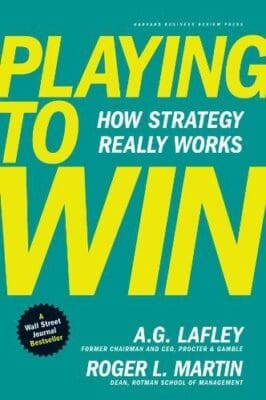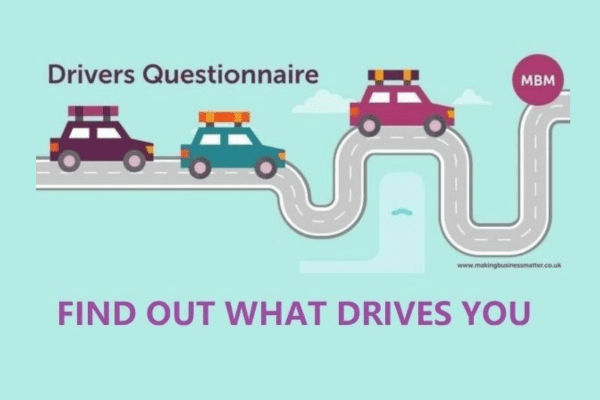Are You Just Playing or Playing to Win?
Playing to Win is a widely recommended book on Strategy by two very impressive authors – Roger Martin and A.G. Lafley. The latter of course was a hugely successful global CEO at P&G (at the time perhaps one of the world’s most effective companies), the former was his long-term strategy advisor. The relationship between these two is fascinating. Lafley describes being CEO as “the loneliest job in the world”, and he used Martin as his personal advisor and supporter in driving strategy change.
The book came out in 2011 and is driven by P&G’s thinking since the mid-80s, and in a sense is “classical” in how it sees the role of the firm. The title itself reflects a corporate era driven by performance over all else. For me, it’s a comforting read that’s familiar to me from my own MBA strategy units. Where the strategy task is to orient the firm to create a competitive advantage. Ok, it’s strongly focussed on CPG, but there are a few examples drawn from other industries. This shows the wider relevance of the concepts discussed. I myself found them applicable even to my own research company.
P&G’s Strategic Thinking
It is full of strong material around this theme. It’s hard to argue with the way P&G structures its thinking and how it seeks to organise itself in a way to enter the right markets, in a way that creates sustainable differentiation. Peppered by examples where they succeeded and more than a few where they did not. Driven by a passion for understanding consumers and shoppers.
That’s one of the conundrums of strategy books. On the one hand, it’s enjoyable to see nice models that purport to underpin success but it raises the question about how reliable and effective they truly are. Are the proponents self-serving in the examples they select? The authors talk about changing the odds, so that’s perhaps the answer.
Strategy isn’t about certainty, it’s about improving your chances. Serendipity plays a huge role in the corporate success (an acquisition with a surprising upside for example) and also bad luck can hamper even the best strategy. But overall one is left with a clear sense that a good strategy based on cleared-eyed in-depth analysis is a must-do for any business manager or owner. For a firm as complex as P&G, there is also the sense that strategy is the only counterforce to a tendency of entropy. For an organisation full of smart people to “explode” in its initiatives and activities.
Emerging Ideas
This all predates two groundbreaking ideas that have emerged recently. Firstly, the importance of finding your “why” (the concept of purpose in business) doesn’t raise its head in this book. For P&G the why is simply about finding and serving consumers. Simple. There is no mention of any need for a higher sense of direction. For P&G, winning is enough. Secondly, Byron Sharp’s book “How Brands Grow” hadn’t appeared.
The authors would, one assumes, be firmly in the camp of “differentiation” as the route to building brands (their entire case study of Olay is founded on this). Winning at the second moment of truth is about defined product point of difference. But at least P&G were the first to grasp the real power of distribution and availability, with their pioneering work around joint planning with retailers. And the story of Pampers touches a little on the dangers of getting too obsessed with functional points of difference.
I usually expect business books to get more and more padded out and fluffy in the second half. Actually, in this one, as the topics turn to the “how” of strategy creation, some of the most interesting ideas and experiences emerge. Underlying ideas that, if unaddressed, would trip up even the most logical of strategy processes. Matters like how to stimulate effective strategy discussion, the need to build strategy by consensus, and bringing in diverse experts.
The tough part of deciding what NOT to do is to be courageous in making difficult and uncertain choices. I loved the concept of reversing strategy from hypothetical choices, going backwards from a potential solution to test the facts to see if there is a strong argument for them. A solution Martin developed when puzzling about why clients sometimes ignore his strategy advice.
Finally…
Finally, right at the end they use a superb way to wrap up. They give 6 simple checks of whether you have a strategy “problem” in your business. And another 6 tests to check if your strategy work is showing fruit. Of the latter, perhaps the surprising one is that you have successful competitors. A great strategy makes clear choices about where to play and the fact that others can play alongside you is a good sign you did in fact make those choices.
So, whether you want a refresher in classic business school thinking on strategy. Or a window into the soul of P&G and indeed being a CEO, Playing to Win is a great read. In fact, I plan to read it all over again.





